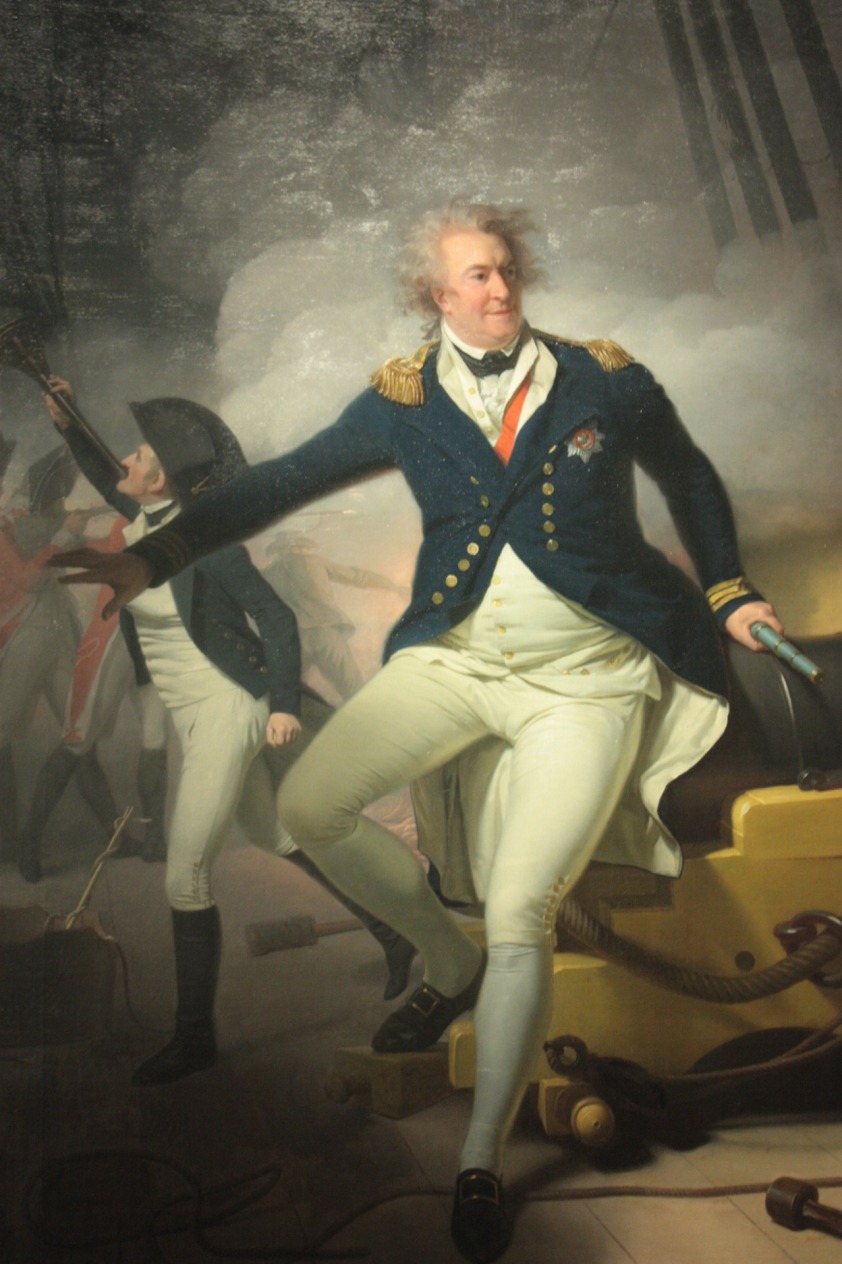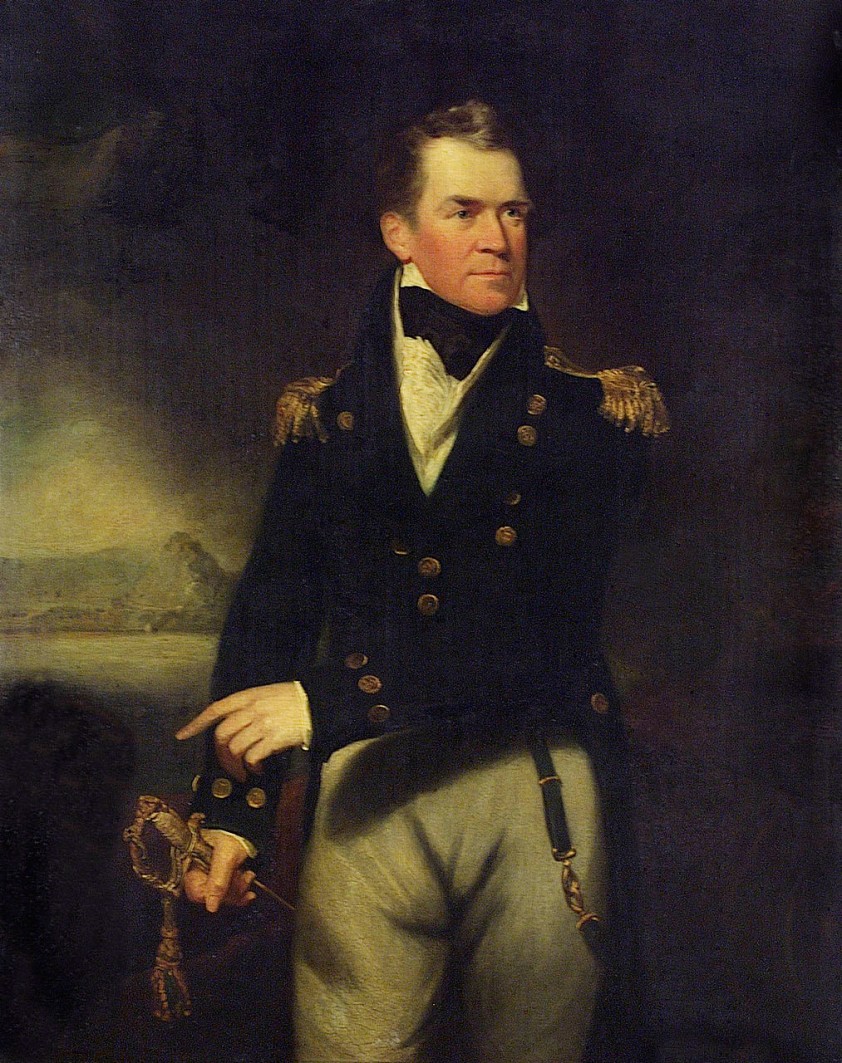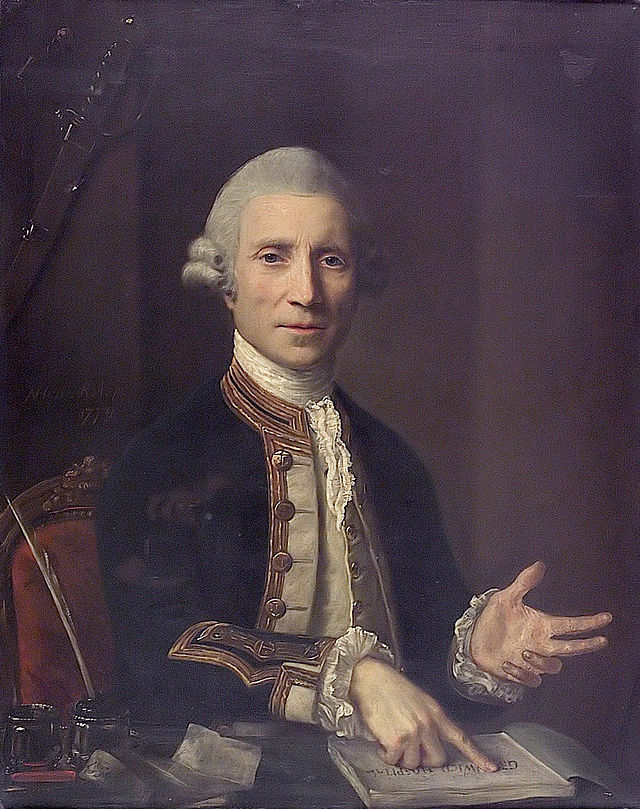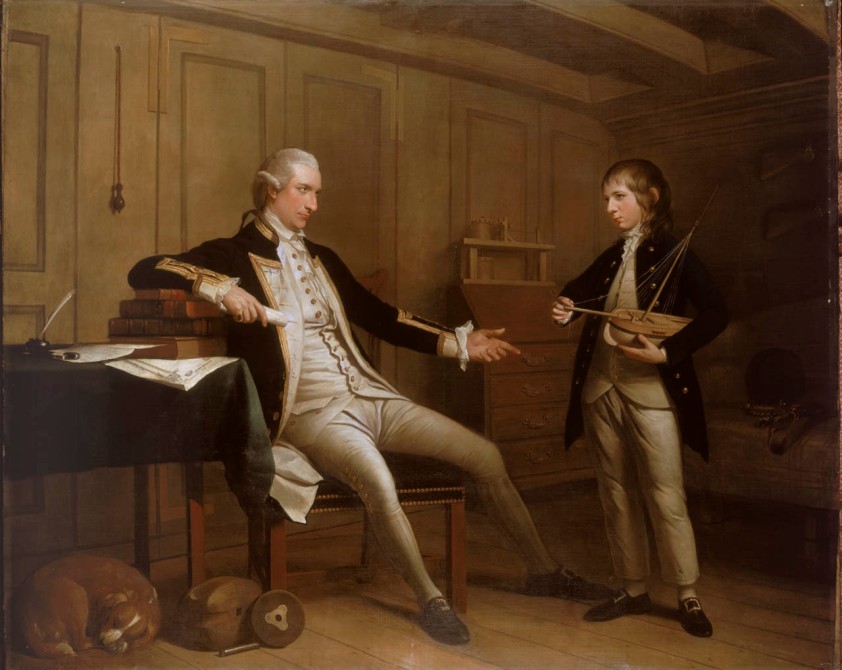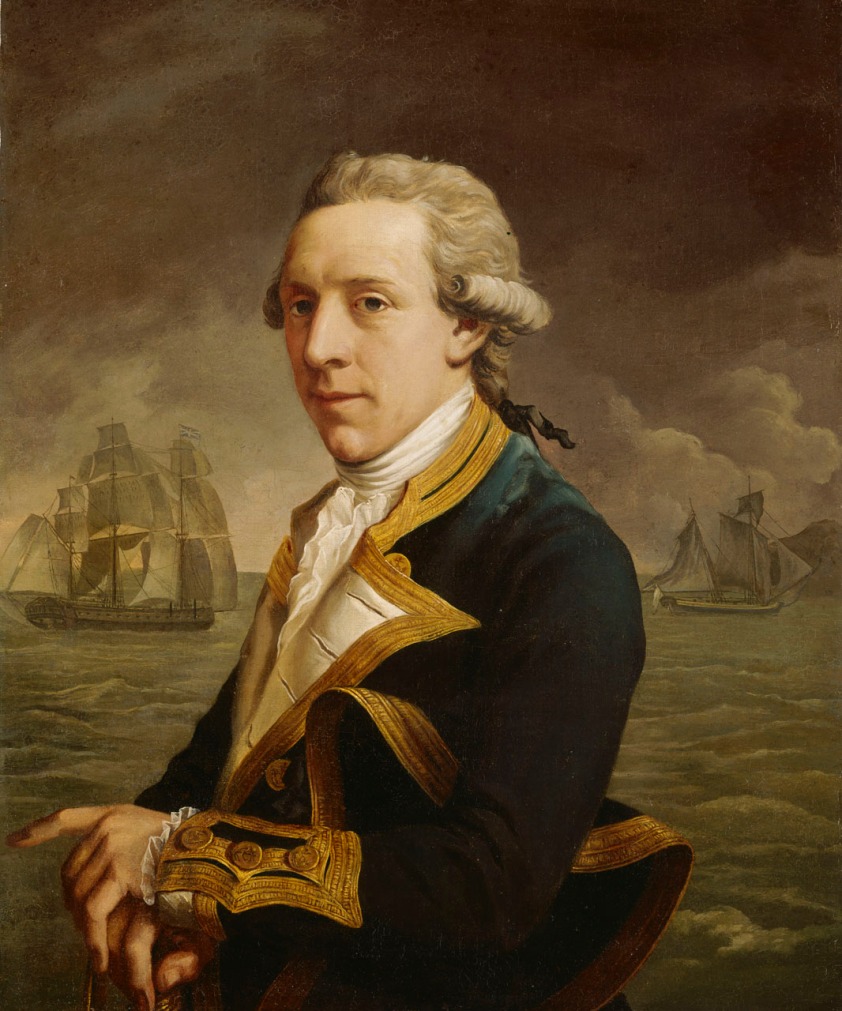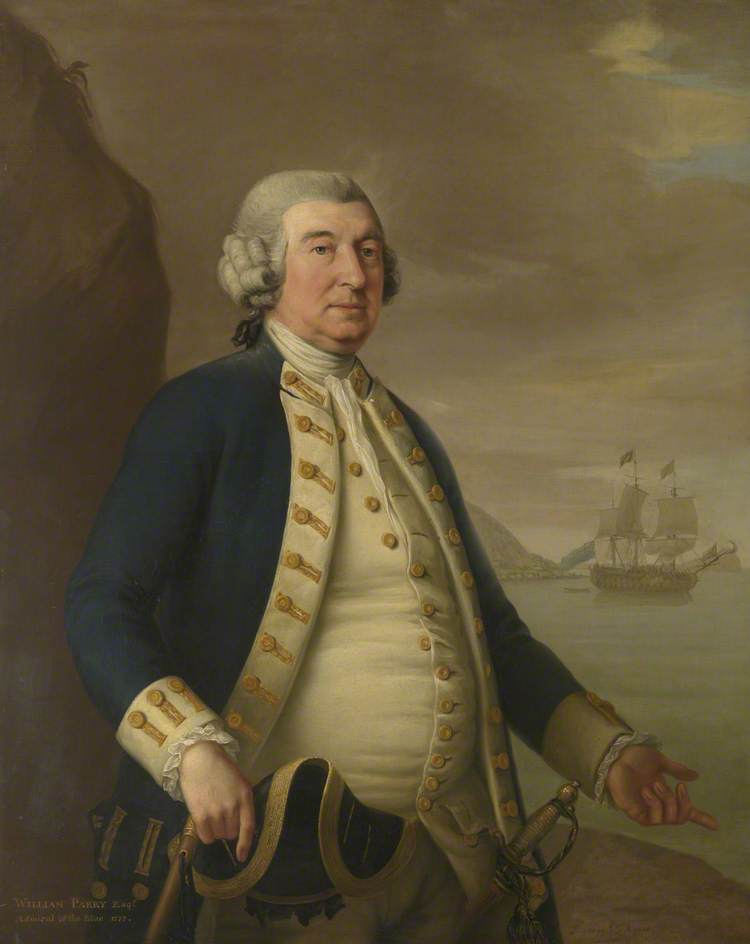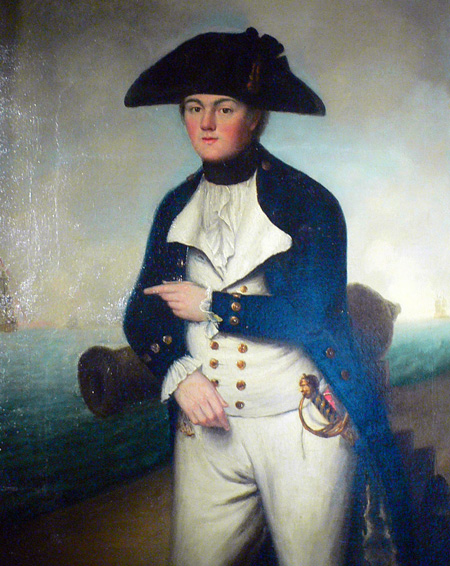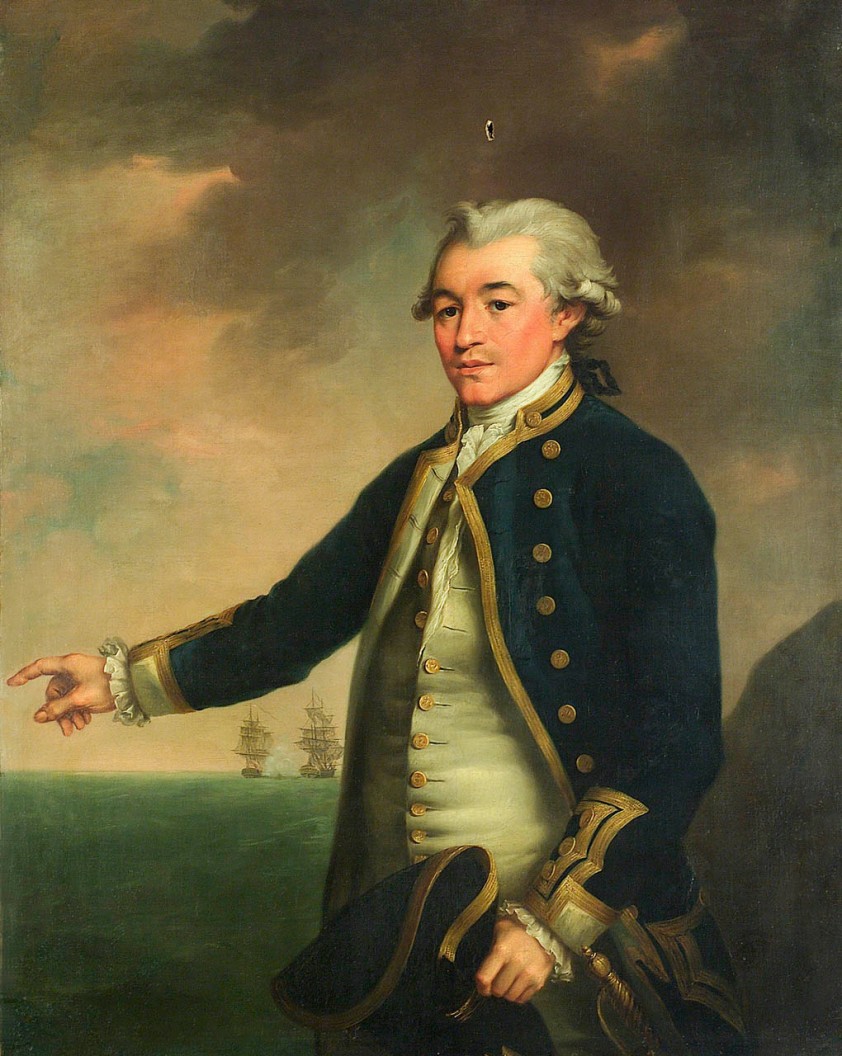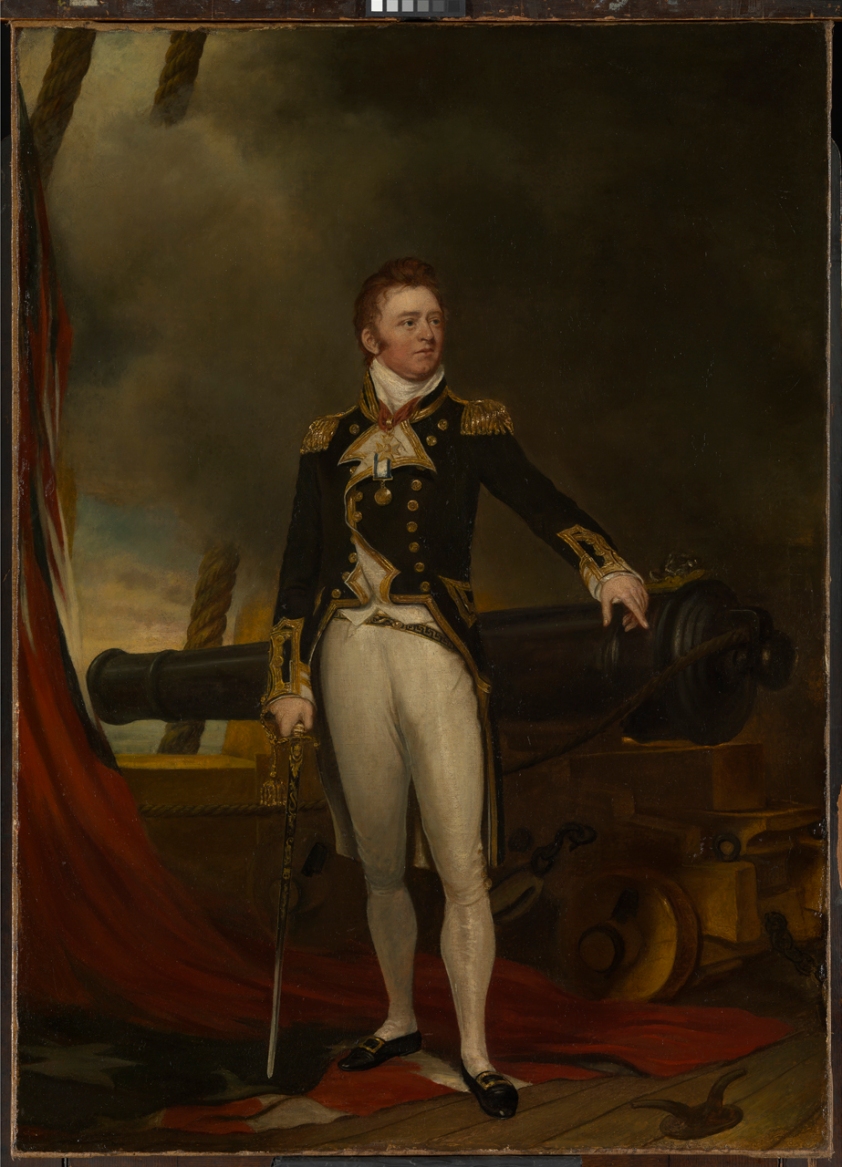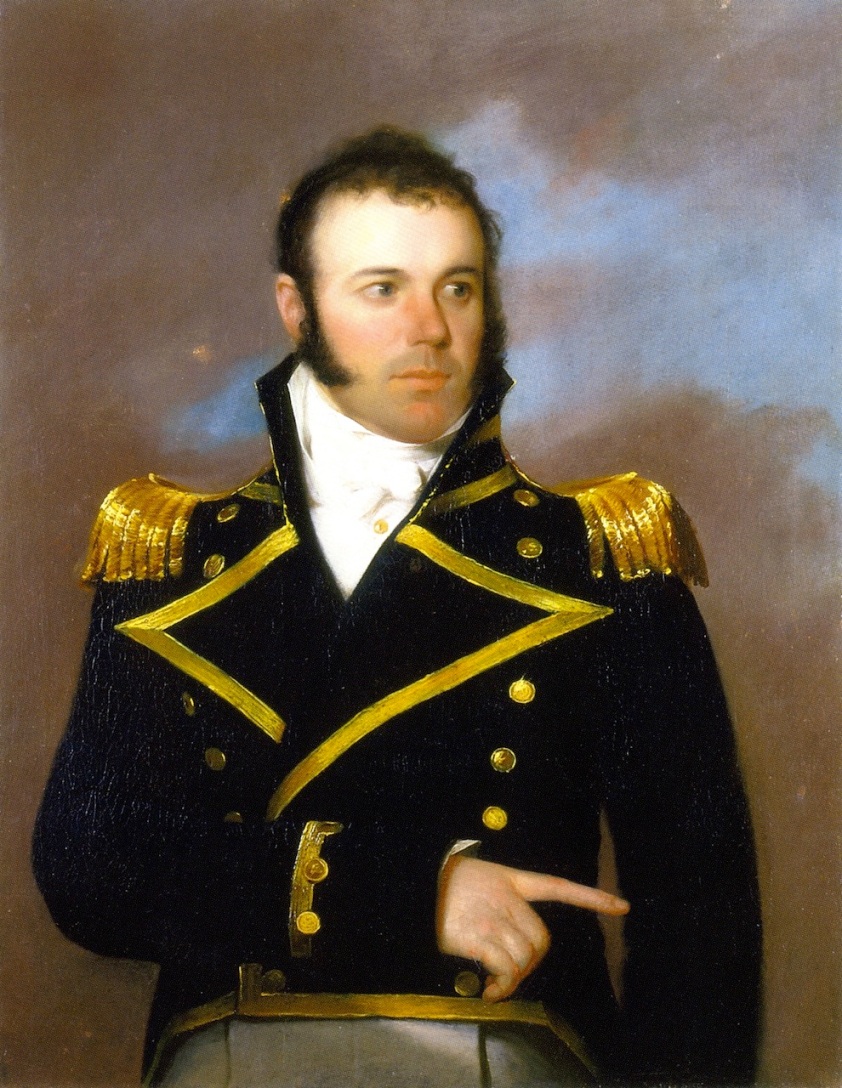
—- Commodore Daniel Todd Patterson– John Wesley Jarvis (c.1815)
“Daniel Todd Patterson (March 6, 1786 – August 25, 1839) was an officer in the United States Navy during the Quasi-War with France, the First Barbary War, and the War of 1812. Although Patterson is properly called a “Commodore”, during his years in the Navy this was not one of the hierarchical
“line” ranks. Instead, “Commodore” applied to any officer in command of a
fleet of two or more ships, regardless of the officer’s “line” rank at
the time, and regardless of whether the officer also held the dual role
of commanding officer of one of the ships in the fleet. Thus Patterson
was a Commodore at the time of the Battle of New Orleans because he
commanded a fleet of ships, even though he was not promoted to the
“line” rank of Captain until after the battle. He again became a
Commodore when in command of the Mediterranean Squadron. Patterson was
never an Admiral because in his day the highest “line” rank in the US
Navy was Captain; the title Admiral was felt to smack of aristocracy and
royalty, and did not become a “line” rank in the US Navy until the
Civil War.” (x)

